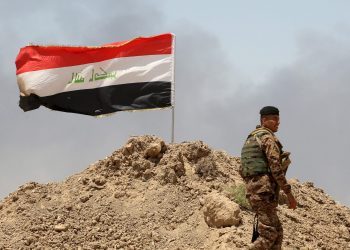AP, ANDERSEN AIR FORCE BASE, Guam (AP) – The Pentagon is likely to announce changes to the makeup and basing of some U.S. military forces overseas as early as December, Defense Secretary Donald H. Rumsfeld said Friday at this base in the western Pacific.
Responding to questions from troops after lunch on this enormous air base, Rumsfeld said the Bush administration recently began discussing these changes with its allies and probably will announce some agreed changes later this year or early in 2004.
He said it would take two to eight years to implement all the changes. He mentioned none specifically. “There are a lot of plans floating around,'' he said, noting that discussions are under way with South Korea regarding consolidating the 37,000 U.S. troops there.
His trip, to include stops in Japan and South Korea, is his first to Asia since becoming defense secretary in January 2001.
On Guam, Rumsfeld planned Friday to visit a U.S. Navy facility, meet with local troops and commanders and take an aerial tour of the island, which was ceded to the United States by Spain in 1898. Guam was surrendered to the Japanese on Dec. 10, 1941, and it remained under Japanese occupation until July 1944, when U.S. forces led by the 3rd Marine Division liberated the island.
Local news reports Friday said Guam Gov. Felix Camacho and the territory's nonvoting delegate to the U.S. House of Representatives, Madeleine Bordallo, met with Rumsfeld at his hotel Thursday evening and urged him to move an aircraft carrier to Guam, citing the island's strategic location.
Some Air Force officials have said they are considering basing new aircraft here, possibly including the F/A-22 fighter and the Global Hawk unmanned long-range reconnaissance aircraft.
Regarding the future disposition of U.S. forces worldwide, Rumsfeld told reporters flying with him Thursday from Washington that after review, the Pentagon had come to preliminary conclusions and was “now at a stage where we can begin discussions with our allies and with Congress.''
“Obviously these things will be adjusted as we talk with our allies and friends and as we test various ideas that might make sense,'' he added, without explaining what ideas were on the table for discussion.
The changes will be part of a worldwide adjustment of U.S. forces to reflect Rumsfeld's view that the static defensive positions adopted by the United States and its traditional allies during the Cold War are not well suited to meet the evolving security threats of the 21st century.
He has questioned, for example, why the 37,000 U.S. forces stationed in South Korea cannot be more readily available for use beyond the Korean peninsula. They have stood guard near the Demilitarized Zone separating South Korea from communist North Korea since the end of the Korean War in 1953.
Washington and Seoul have been negotiating for months on details of a plan to consolidate U.S. bases in South Korea. That is a lengthy, two-phase process that the Bush administration believes can substantially shrink the U.S. force there – possibly cutting it by as many as 12,000 troops.
Rumsfeld would not discuss any numbers. Addressing only the broad policy goal, he said the hope is to move away from arrangements not suitable for current security challenges such as fighting terrorism.
“That requires much more agility, it requires access to a larger number of locations'' for U.S. forces globally and it requires moving away from static defenses, he said. In this context Rumsfeld did not specifically mention Korea, but by almost any definition the U.S. defense there is static.
On Guam, the main American military post is Andersen Air Force Base, although the Pentagon is considering increasing its naval presence by moving one aircraft carrier from a continental U.S. base to either Guam or Hawaii.
Last March, just days before the U.S. invasion of Iraq, 12 B-52 bombers and 12 B-1 bombers were deployed to Guam. That happened shortly after four North Korean MiG fighters intercepted an American military surveillance flight operating in international airspace off the Korean coast. The bombers have since returned to their home stations in the United States.









